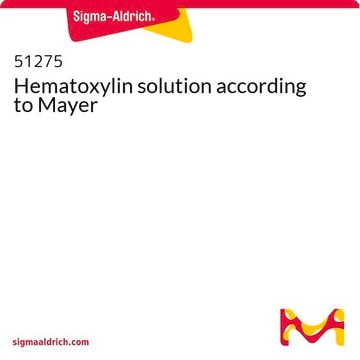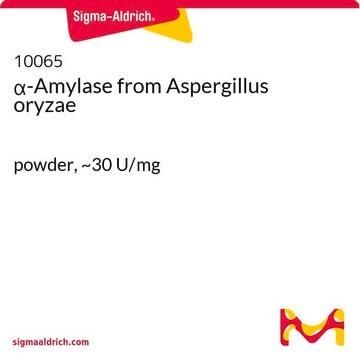Yes, chloral hydrate is included in the formulation. No, the solution is not controlled as a DEA Schedule IV product. Once the choral hydrate is mixed with the remaining chemicals, it is impossible to obtain the chloral hydrate in a purified form.
Recommended Products
form
solution
Quality Level
shelf life
Expiry date on the label.
IVD
for in vitro diagnostic use
concentration
1 g/L
pH
2.4 (25 °C)
application(s)
hematology
histology
storage temp.
room temp
SMILES string
Oc1cc2C[C@@]3(O)COc4c(O)c(O)ccc4[C@H]3c2cc1O
InChI
1S/C16H14O6/c17-10-2-1-8-13-9-4-12(19)11(18)3-7(9)5-16(13,21)6-22-15(8)14(10)20/h1-4,13,17-21H,5-6H2/t13-,16+/m0/s1
InChI key
WZUVPPKBWHMQCE-XJKSGUPXSA-N
Looking for similar products? Visit Product Comparison Guide
General description
Application
Other Notes
Storage Class Code
12 - Non Combustible Liquids
WGK
WGK 2
Flash Point(F)
Not applicable
Flash Point(C)
Not applicable
Choose from one of the most recent versions:
Already Own This Product?
Find documentation for the products that you have recently purchased in the Document Library.
Customers Also Viewed
Protocols
Use this protocol to for the entire immunohistochemistry (IHC) procedure through staining and visualization of specific antigens in paraffin-embedded tissue sections.
Use this protocol to for the entire immunohistochemistry (IHC) procedure through staining and visualization of specific antigens in paraffin-embedded tissue sections.
Use this protocol to for the entire immunohistochemistry (IHC) procedure through staining and visualization of specific antigens in paraffin-embedded tissue sections.
Use this protocol to for the entire immunohistochemistry (IHC) procedure through staining and visualization of specific antigens in paraffin-embedded tissue sections.
-
Is chloral hydrate used in the preparation of Mayer's Hematoxylin? Does this mean the solution is controlled as a DEA Schedule IV product?
1 answer-
Helpful?
-
-
There are several Mayer's Hematoxylins listed on the website, beginning with the letters MHS. What are the differences?
1 answer-
Products MHS1, MHS16, MHS32, MHS80 and MHS128 are in fact the same product. In this case a unique product number was assigned to each package size. Other than the package size, there are no differences in formulation or use.
Helpful?
-
-
There is also a product listed on the website as Hematoxylin Solution According to Mayer. What is the difference between product 51275 and the various Mayer's Hematoxylin solutions?
1 answer-
The basic formulations are the same. Both include chloral hydrate, although some of the concentrations could vary slightly. Product 51275 is not intended for In Vitro Diagnostic Use. Product 51275 is not CE Marked. The various Mayer's Hematoyxlin solutions are intended For In Vitro Diagnostic Use and are also CE Marked. Product inserts are available for various languages.
Helpful?
-
-
The website states that Mayer's Hematoxylin solution is a progressive type hematoxylin. What is a progressive type hematoxylin?
1 answer-
Hematoxylin solutions are generally classified as either progressive or regressive. Progressive formulations will stain only the nucleus. No staining should occur within the cytoplasm. Regressive hematoxylins have higher dye contents and if used for sufficient periods of time will overstain both the nucleus and the cytoplasm. Acid differentiation is required to remove the excessive stain from the cytoplasm and nucleus. This differentiation take practice to master. Too much or too little stain can be removed during differentiation, resulting in poorly stained slides. For users lacking extensive experience with the Hematoxylin and Eosin staining procedure, progressive hematoxylin formulations are often the better choice.
Helpful?
-
-
The slides were stained with Mayer's Hematoxylin but the nuclei are not blue. Why?
1 answer-
The nuclei will originally appear as the same color as the solution. Only after the slides have been "blued" will the nuclei appear blue. The pH of the solution is acidic. This acidic pH promotes specific staining. However the slides must be washed in an neutral or alkaline solution for the color to shift to blue. Prolonged warm water washes in tap water are often sufficient for the bluing to occur. To shorten the time spent in washing, various bluing agents are often used to shorten the blueing process. Scott's Tap Water Substitute (Product No. S5134) is one such blueing agent.
Helpful?
-
-
What is the Department of Transportation shipping information for this product?
1 answer-
Transportation information can be found in Section 14 of the product's (M)SDS.To access the shipping information for this material, use the link on the product detail page for the product.
Helpful?
-
Active Filters
Our team of scientists has experience in all areas of research including Life Science, Material Science, Chemical Synthesis, Chromatography, Analytical and many others.
Contact Technical Service









